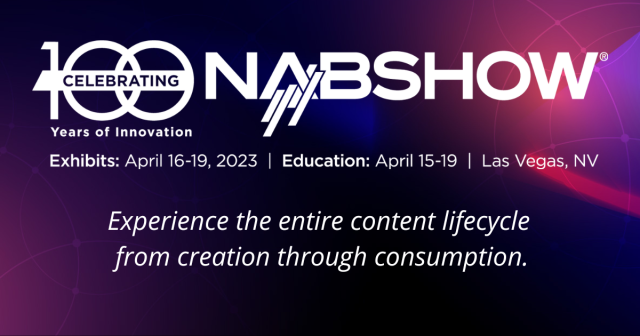TL;DR
- There’s no cookie-cutter approach to live streaming at Disney+, which tweaks its bitrates according to service, sport and whether the content is live or on demand.
- Contrary to what many vendors advocate in the live streaming sports space, ultra-low latency is not a priority for major streamers. That comes down to whether audiences would pay more for better content or a fractionally faster service.
- The wholesale shift from live production gear to the cloud won’t happen until the older generation of broadcast engineers retires.
Live streaming is often painted as a trade-off between resolution and latency. The bandwidth simply isn’t there to support both. It’s a simplistic equation at best and one that doesn’t match the reality of streamers who are constantly experimenting with the parameters to find the service that best delivers the experience different audiences expect.
“We’re all over the road when it comes to how we’re quickly adapting to the quality for live versus on demand on our service,” said Michael Fay, VP, Software Engineering Disney Streaming Services, in a revealing panel on the topic convened for 2022’s NAB Show Streaming Summit.
“I think that that speaks to the challenges of what the future of live and linear is going to look like. When we produce a pay per view UFC event, for example on ESPN, we stand up an entirely new and unique workflow, and we set the bitrates for that particular event based on what we think the quality of the stream needs to be.”
Fay is responsible for Disney Plus, Hulu Star, Star+ and ESPN+ online distribution strategy on their senior technology team.
“The point is that when it comes to live versus on demand nothing is set in stone,” he continued. “We’re still trying a variety of different things to figure out what is the right answer for our subscribers. That includes live, that includes linear and that includes video on demand.”
Disney is forecasting more growth in live, he said.
“We’re willing to rewrite the book when it comes to live and linear and figure out what’s working. So even a mature brand like Disney Plus is still figuring it out.”
Take bitrates as one metric of service performance. We learn that Hulu’s live adaptive bitrate is 6.9 megabits average while Hulu’s VOD bitrate is 5.6MB/s average. “So, our live content broadcasts domestically at a much higher quality than our on-demand content for Star+, which is available internationally.”
However, ESPN’s VOD bitrate is 9.8MB/s on average and ESPN live content is 6.8MB/s. “Completely inverse of what Hulu is. Then our theatrical content at Disney Plus is 12.8MB/s — a real quality theatrical experience. The reason I share that with you is because the rules for us are changing and we don’t have a rule of thumb for how we treat live versus how we treat on demand.”
Or take latency as another metric. “We ran it up the flagpole and said, ‘How do we want to handle latency?’ And I’m just speaking specifically to a complex nature of a live production for scalable, very large multi-million concurrent connection audiences. The decision that Disney made was we will take higher quality over faster startup times or ultra low latency streams.”
Fay said, “We would rather give the audience in a football match a crystal clear Chyron or lower third than be within 3 seconds of the broadcast program over the air. We made that decision.”
Disney could have chosen to run on WebRTC and reduce the latency and give everybody the same stream within three or 4 seconds but opted for a higher quality audio-visual experience instead.
He said, “We find that our subscribers care more about having an awesome high quality experience than they do about having a low latency experience. And that goes for breaking news and that goes for sports.”
Magnus Svensson, Media Solution Specialist and Partner, Eyevinn Technology (also the panel moderator) agreed with Fay, “Because if you ask a viewer if they will pay extra to get a few seconds lower latency or if they will pay extra to get better quality streams for 4K and HDR, I think we all know the answer. The viewers will pay for quality. Very, very few will pay for getting five or two seconds lower latency. These users are probably somewhere else doing live betting.”
Speaking for US-based hybrid broadcast and broadband TV delivery service Evoca TV, Imran Maskatia, VP, Product Development, said, “We don’t get complaints on latency, honestly. I also don’t think it has to be latency or quality. I think there’s an art form and every delivery mechanism is different. I think there there’s a happy middle ground where you can achieve both quality and less latency.”
Ironically perhaps, the Disney executive said he envied the relative simplicity of a Netflix since it doesn’t have a live product. He indicated that having live and VOD services meant the potential existed for the company to introduce more interactive features at the cost of complexity.
“I don’t count anything as being dead and, you know, keep a flexible and open framework so that if data integration with a particular live program for sports or breaking news needs to be incorporated, you’re capable of doing that and your services able to do that.”
The panel also discuss the shift of live production infrastructure from on prem to cloud concluding that this won’t happen for most of the industry for at least five years and perhaps up to ten years.
“I believe that it’s a generational thing,” said Fay. “Younger software engineers and younger hardware engineers are going to be more tolerant of the cloud than older broadcast engineers who are getting into the streaming space, who want to see the red led flashing to know that that thing is working.”
Maskatia added that legacy investment was also an impediment to change; “there will be a purchase point at some point in future where people will switch from on prem to cloud, but it won’t be immediate. It will be when the cost is cheaper.”
Looking further ahead, the panel consider the extent to which streaming services can go beyond the capabilities of broadcast and introduce personalization and interactivity.
Pierre-Louis Theron, VP, Product Management, Content Delivery, Lumen Technology, said that it had to bring real value. “What exactly it is to potentially watch something together in the metaverse. We don’t really have any idea yet. There’s been some examples (such as Watch Groups). It’s probably working for some content, not for some other content. I don’t think we have yet figured it out.”
Fay suggested that the next iteration of Disney Plus “is where you’re getting like all these Pixar characters and you have your own avatar, you have a whole Pixar experience.”
Join Us At This Year’s Streaming Summit
Held April 17-18 as part of NAB Show in Las Vegas, the two-day Streaming Summit focuses on streaming business and technology.
A two-track event that includes fireside chats, technical presentations, case studies, and roundtable sessions, the Streaming Summit covers topics including: the bundling of content; codecs; transcoding; live streaming; video advertising; packaging and playback; monetization of video; cloud based workflows; direct-to-consumer models; and the video ad stack.
This year’s programming includes:
• Defining the User Experience for Live Sports Streaming
• Packaging and Distribution Strategies for Subscriber Engagement
• Challenges and Best Practices for Delivering Video at Scale
• The Business of Sports Streaming: Monetization Opportunities and Challenges
• FAST, AVOD and SVOD: OTT Business Models for Every Consumer
• Challenges and Opportunities in Measuring Video Advertising
• Scaling Cloud Based Workflows for Quality and Price
• Cord Cutting, Linear TV, and the New Streaming TV Bundle


